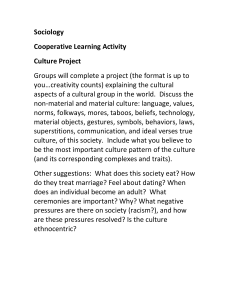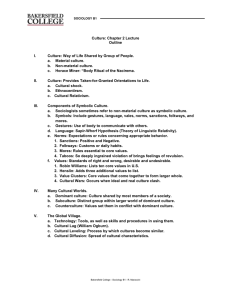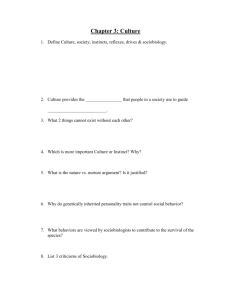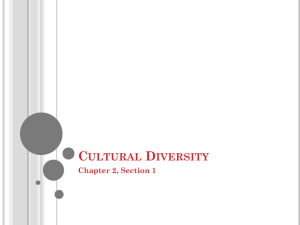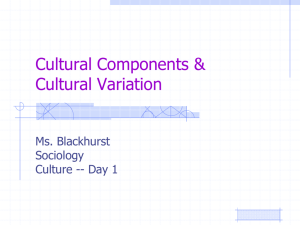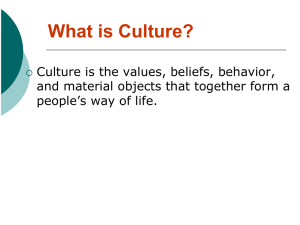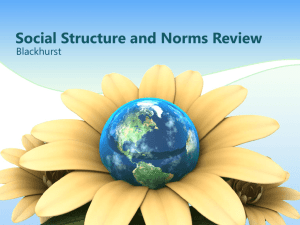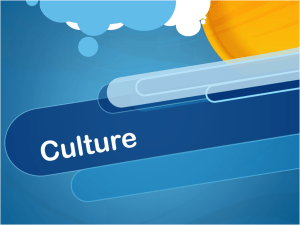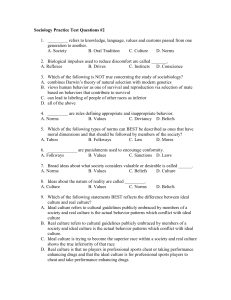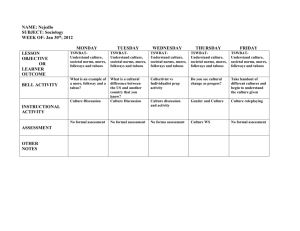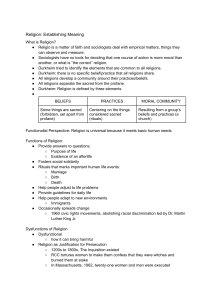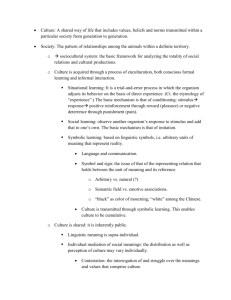Chapter 3 The Meaning of Culture Think about these… What
advertisement
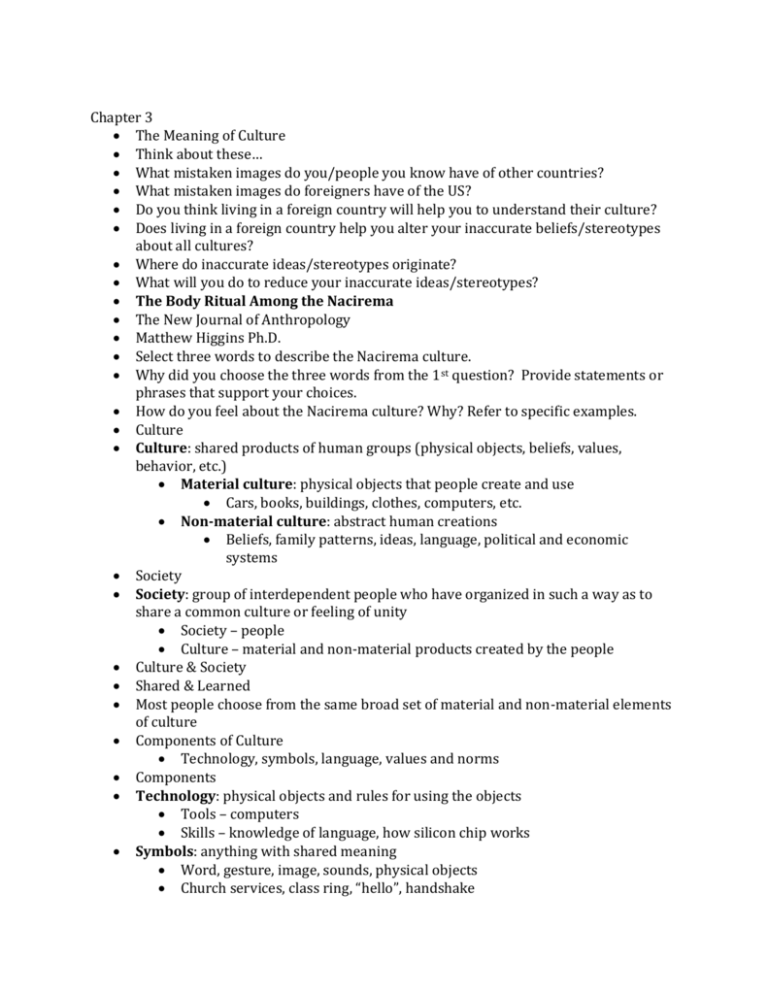
Chapter 3 The Meaning of Culture Think about these… What mistaken images do you/people you know have of other countries? What mistaken images do foreigners have of the US? Do you think living in a foreign country will help you to understand their culture? Does living in a foreign country help you alter your inaccurate beliefs/stereotypes about all cultures? Where do inaccurate ideas/stereotypes originate? What will you do to reduce your inaccurate ideas/stereotypes? The Body Ritual Among the Nacirema The New Journal of Anthropology Matthew Higgins Ph.D. Select three words to describe the Nacirema culture. Why did you choose the three words from the 1st question? Provide statements or phrases that support your choices. How do you feel about the Nacirema culture? Why? Refer to specific examples. Culture Culture: shared products of human groups (physical objects, beliefs, values, behavior, etc.) Material culture: physical objects that people create and use Cars, books, buildings, clothes, computers, etc. Non-material culture: abstract human creations Beliefs, family patterns, ideas, language, political and economic systems Society Society: group of interdependent people who have organized in such a way as to share a common culture or feeling of unity Society – people Culture – material and non-material products created by the people Culture & Society Shared & Learned Most people choose from the same broad set of material and non-material elements of culture Components of Culture Technology, symbols, language, values and norms Components Technology: physical objects and rules for using the objects Tools – computers Skills – knowledge of language, how silicon chip works Symbols: anything with shared meaning Word, gesture, image, sounds, physical objects Church services, class ring, “hello”, handshake Components (cont’d) Language: organization of written or spoken symbols in standardized system Values: shared beliefs about what is good or bad, right or wrong Values determine people’s character and kind of culture Components Norms: shared rules of conduct that tell people how to act in specific situations Expected behavior; not always actual behavior Not all people in culture will be in line with norms Folkways & Mores (mor-ays) Norms Folkways: describe socially acceptable behavior but do not have great moral significance Shake hands, eating with knife, do your homework Mores: greater moral significance; violations endanger society’s well-being and stability Deviance from mores – dishonesty, fraud, murder Folkways vs Mores Laws: written rules of conduct enacted and enforced by government Arson, theft, rape, murder, etc. Exception: less severe folkways – parking in spot for disabled Failure to adhere Mores: punishments severe Folkways: less severe punishment or reprimand Cultures… Culture Trait: individual act, tool or belief related to particular situation/need Eating with utensils, greeting when you meet someone Culture Complexes: cluster of interrelated traits Example…. Culture Complexes & Traits Ethnocentric vs Cultural Relativism Ethnocentric: universal tendency to judge or interpret other cultures according to the criteria of one’s own culture Cultural Relativism: Belief that cultures should be judged by their own standards rather than applying the standards of another culture Cultural Change Discovery: learning about something previously unknown or unrecognized Scientific research Invention: reshaping existing cultural items into a new form Guns, video games, airplanes, 1st Amendment rights Diffusion: transmission of culture from one society or group to another Piñatas – China (springtime) to Italy to Spain & finally Mexico Cultural Diversity Cultural differences between and within nations Race, Religion, Ethnicity, sexual orientation, occupation, etc. Homogeneous: share common culture Heterogeneous: differences in culture (social, political, economic, religious) Immigration – “others” or “outsiders” Aggravation, anger, frustration Counterculture Group that strongly rejects dominant societal values and norms and often seek alternative lifestyles KKK Hippies in the 1960s; beatniks of 1950s Subcultures Subculture: category of people who share distinguishing attributes, beliefs, values and norms but live within a larger culture Old Order Amish in the United States Native Americans in United States Muslims in America Old Order Amish Strong faith in God Reject worldly concerns Core values: joy of work, primacy of home, faithful, thrifty, humility Conservative view of family Women are subordinate, no birth control, wives stay home 7or more children – valuable Horse and buggy Traditional clothes
